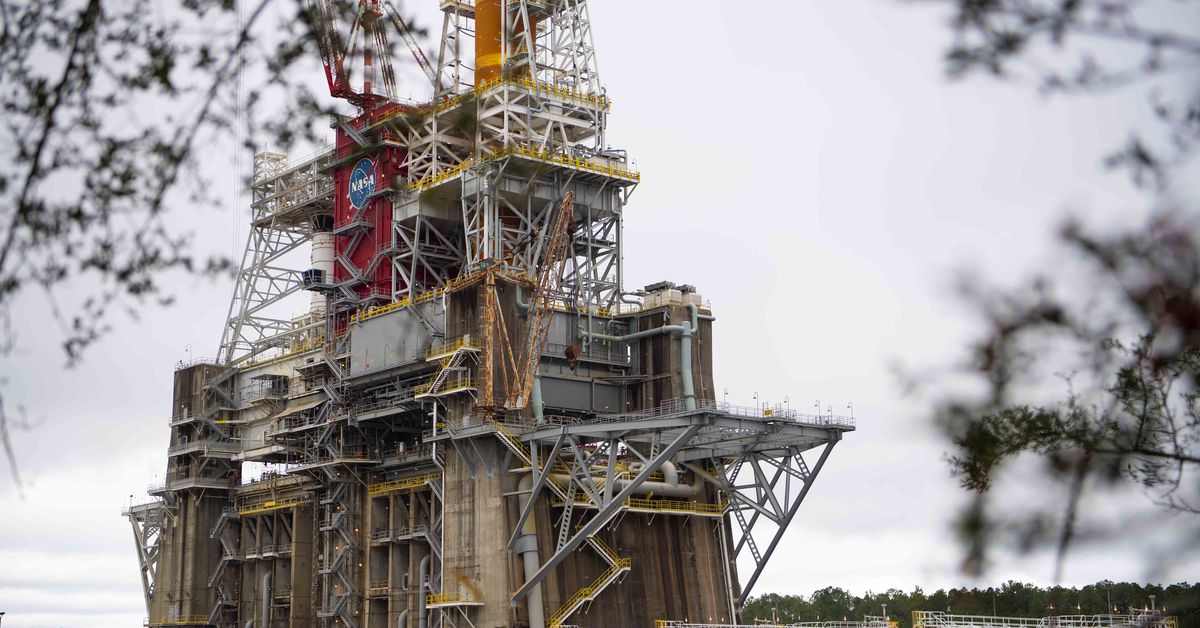Watch NASA test fire its massive new rocket
Source: The Verge added 16th Jan 2021Four huge rocket engines will roar to life on Saturday, in a crucial test for NASA’s powerful next-generation rocket. This long-awaited trial run won’t leave the ground, but it will be so powerful that officials have warned that it may be heard up to 60 miles away.
Saturday’s test is the last step in series of tests that NASA calls a Green Run for the Space Launch System (SLS), a powerful rocket designed to launch missions to the Moon and deep space. It will test the 212 foot tall core of the SLS, which consists of four engines, liquid fuel tanks, and the computer and technical systems that NASA calls the “brains” of the rocket.
The rocket was originally intended to debut in 2017, but it has consistently been over budget and behind schedule. Now, NASA will finally have a chance to see how the rocket’s systems work while the four engines are firing ahead of the SLS’ first launch later this year. Engineers and technicians have already tested the core’s backup systems, run through dress rehearsals to double check-timing, and loaded and unloaded hundreds of thousands of gallons of fuel ahead of the big event. Now they just need to put it all together for the first time to really mimic a launch.
“To be able to run a test like this, it takes not only a village, but small city,” said Ryan McKibben, the Green Run test conductor at Stennis Space Center, in a press conference. It will take six barges to haul more than 700,000 gallons of super cold propellent needed for this test — roughly 200,000 gallons of liquid oxygen, and 500,000 gallons of liquid hydrogen.
The four engines themselves were originally built for NASA’s Space Shuttle program, which ended in 2011. They’ve been updated with upgrades including new engine controllers to get them ready to become part of the SLS. When the engines are fired, they will produce 1.6 million pounds of thrust — more than enough to send the core soaring. “When we ignite the engines, the stage actually will think it is flying. That’s what it’s built to do,” McKibbin said.
While the core of the SLS is built to fly, the massive test stand is designed to keep it firmly grounded. The huge structure is anchored into the ground with over 144 feet of concrete and steel that will absorb and redirect the thrust from the engines, McKibbin said. The engines will burn for about eight minutes — approximately the same amount of time that it will take to launch the rocket to the Moon on future missions.
This is the last big rehearsal for the rocket before it heads to space, which means it’s also one of the last chances for NASA to get data on how the rocket might perform. The team plans to run the engines through the same thrust changes that they will eventually endure when they fly through the Earth’s atmosphere. The core stage is packed with over 1,400 sensors to help document all aspects of the test and gather data that NASA will analyze intensely over the next several days after the test.
“The reason we test is to uncover issues on the ground and not in space,” said Julie Bassler, SLS stages manager, at a NASA press conference this week. “We are doing everything we can to ensure that we get the most out of this hot fire test and we are ready to launch.”
If the test is successful, the core stage will be inspected and shipped to Kennedy Space Center (KSC) in Florida, where it will be joined to other parts of the rocket and the Orion crew capsule. Sometime after that, the SLS will make its launch debut on the uncrewed mission called Artemis 1. That mission doesn’t have a firm date yet, but NASA is aiming for that launch to happen in November 2021.
Even as the SLS heads for space, it’s worth noting that it is not the only deep space rocket on the horizon. SpaceX is rapidly prototyping its Starship system in Texas, and the Starship design is being considered as a candidate lunar lander for future NASA missions.
The window for the SLS hot fire test opens at 5:00PM ET, and coverage on NASA TV will start at 4:20PM ET. NASA’s livestream coverage can be found on YouTube and on the agency’s website.
brands: Budget Built Crucial First Fly Lander Million New One Orion other ReDirect Shuttle Space Team media: 'The Verge' keywords: NASA SpaceX TV YouTube
Related posts
Notice: Undefined variable: all_related in /var/www/vhosts/rondea.com/httpdocs/wp-content/themes/rondea-2-0/single-article.php on line 88
Notice: Undefined variable: all_related in /var/www/vhosts/rondea.com/httpdocs/wp-content/themes/rondea-2-0/single-article.php on line 88
Related Products
Notice: Undefined variable: all_related in /var/www/vhosts/rondea.com/httpdocs/wp-content/themes/rondea-2-0/single-article.php on line 91
Warning: Invalid argument supplied for foreach() in /var/www/vhosts/rondea.com/httpdocs/wp-content/themes/rondea-2-0/single-article.php on line 91
